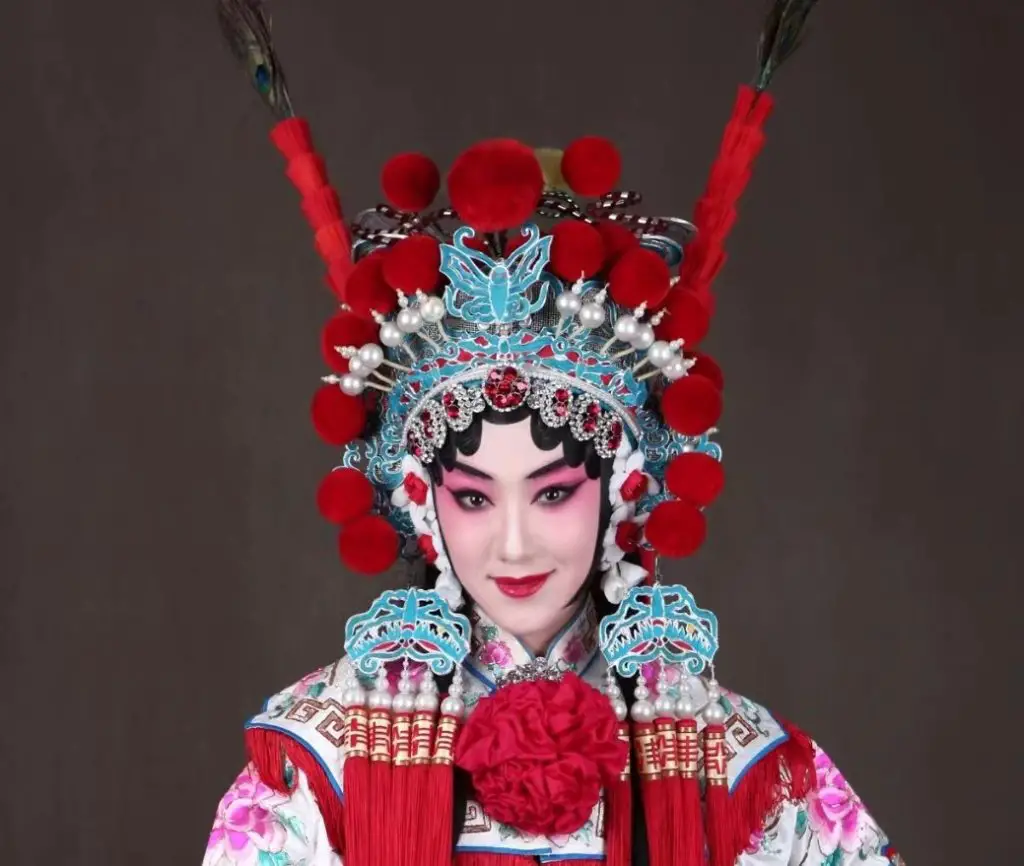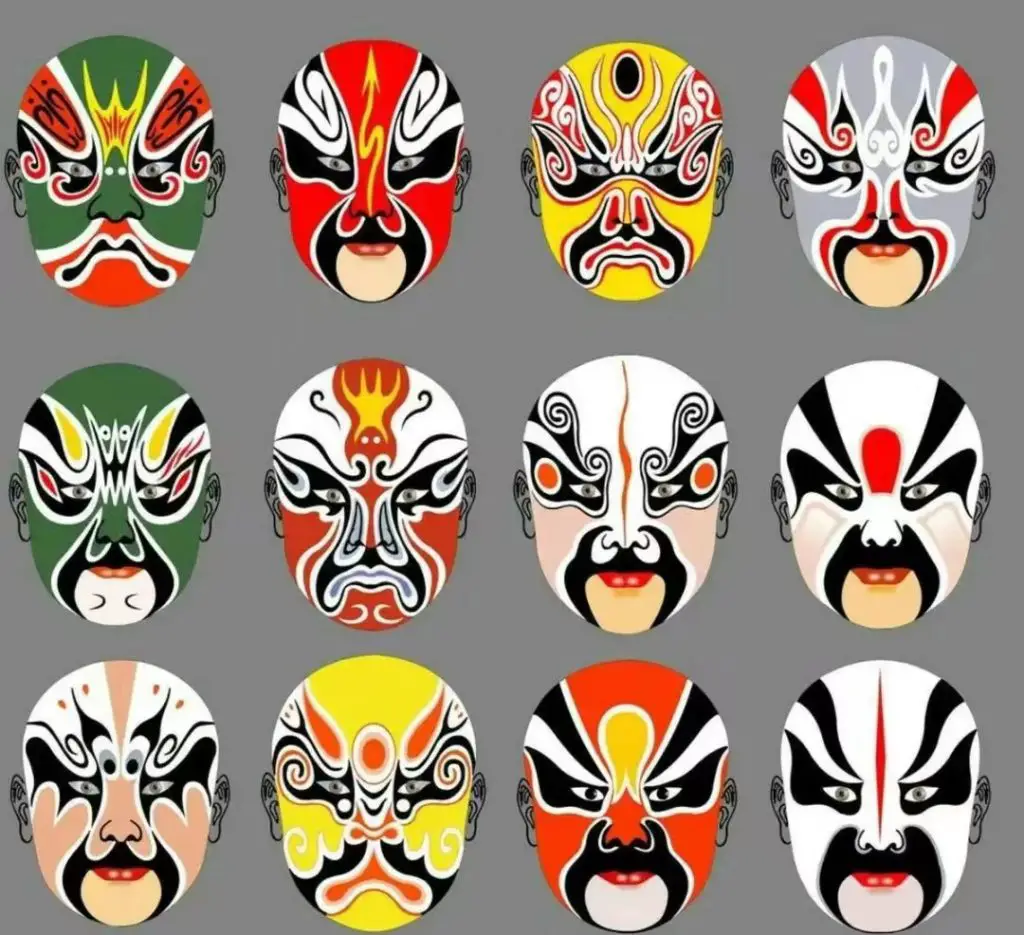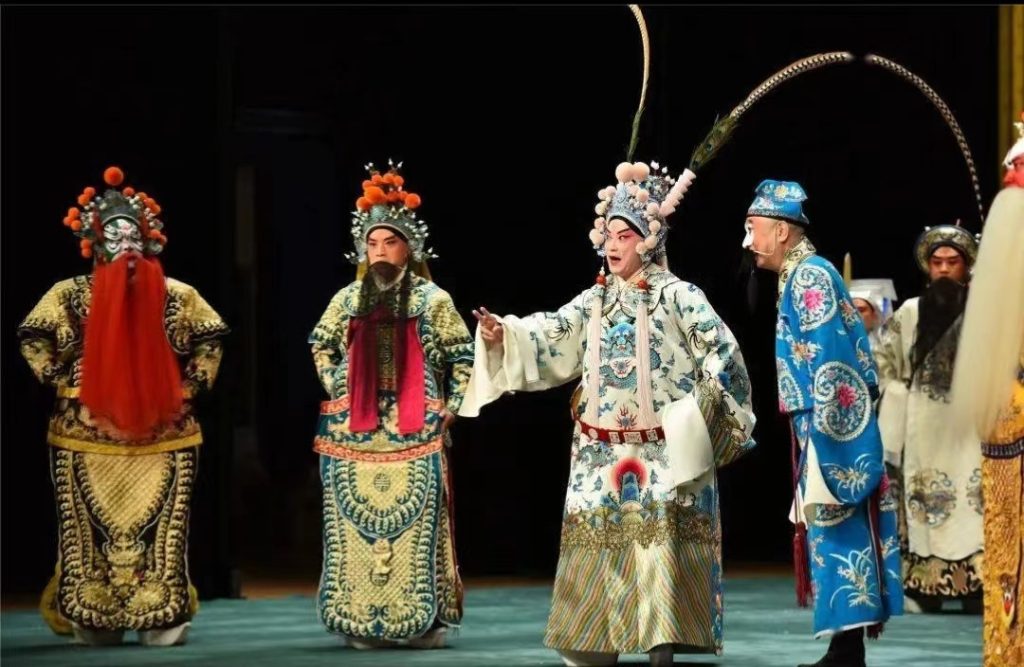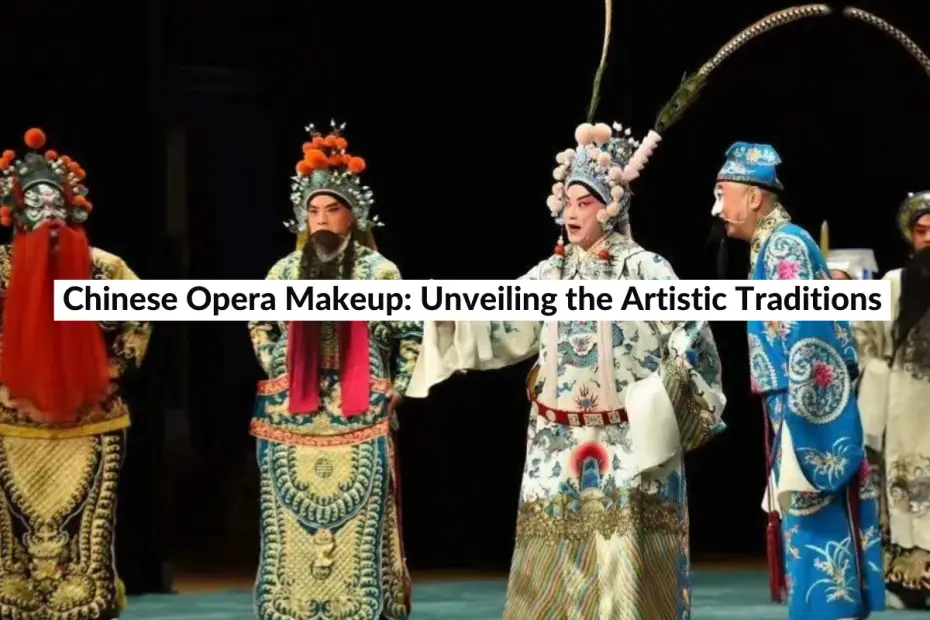Chinese traditional Beijing Opera facial makeup is a captivating art that has been performed by skilled artists for centuries.
You may have seen these artists donning colorful masks on TV or other media platforms. But do you know the significance behind these masks?
Rooted in Chinese culture, this form of facial makeup is a unique artistic expression in Chinese operas, boasting a rich history.
It serves the purpose of visually representing the appearances, dispositions, and moral qualities of various characters through a combination of artistic exaggeration, truthful portrayal, and symbolism.
Each opera mask is carefully crafted to convey praise or condemnation towards the depicted characters.
Recently, there has been an intriguing app called “Beijing Opera Facial Makeup” that has gained considerable attention.
This app allows users to combine an interesting mask with their own photo in a matter of minutes.
However, in reality, painting a traditional mask requires skill, time, and effort. Would you like to give it a try?
Painting a modern Chinese Douyin Makeup only requires reading this!
Function and Significance of Facial Makeup in Peking Opera:
Facial makeup serves multiple purposes, including expressing character traits, indicating the character’s situation, creating psychological distance between the play and the audience, and generating artistic stimulation.

Expression of character and situation: Facial makeup in Peking Opera can convey information about a character’s personality, emotions, and fate. For example, Xiang Yu’s painted “crying” eyes symbolize his tragic ending, while Bao Gong’s frowning indicates his worried demeanor. The Monkey King’s distinctive monkey-shaped face signifies his identity as a monkey character.
Psychological distance: The use of facial makeup in Peking Opera creates a psychological distance between the audience and the performers. By obscuring the actors’ true faces with painted patterns and colors, the audience is prevented from perceiving the actors’ actual appearance. This helps to avoid the illusion of mere mimicry and allows the audience to appreciate the performance as a work of art rather than a realistic portrayal.
Contrast and artistic stimulation: The juxtaposition of different facial makeup styles, such as the “Dahualian” (painted face with a white base) and “Jundai” (grotesque makeup), creates a sharp contrast. This contrast highlights the beauty of the “Sheng” (male) and “Dan” (female) characters and the grotesqueness of the “Jing” (painted face) characters.
Additionally, the use of thick, bright oil colors and various patterns, combined with the powerful and rough voice of the Jing actors, generates strong artistic stimulation that can excite, vent, and shock the audience.
Variation in facial makeup: While there are general principles and conventions for facial makeup, variations occur based on factors such as the repertoire, age of the characters, and the actors’ faces. The facial makeup of characters appearing together, especially the tone color, should not be overly heavy.
This ensures visual harmony and enables the audience to distinguish different roles, even from a distance. Jing actors typically have the most complex and elaborate facial makeup. For example, Chu Bawang’s makeup, known as the “Wushuang face,” is specifically used for his character.
It portrays him as a tragic figure with a violent temperament through painted features and dark shadows. Xiang Yu’s makeup, on the other hand, predominantly features a white base, symbolizing treachery and cruelty, despite his emotionally profound character portrayal.
The traditional Chinese opera incorporates various facial makeup styles to represent different characters and convey their personalities. The makeup techniques and patterns used are highly stylized and follow specific rules and methods.
Different Types of Roles Facial Makeup in Chinese Opera:
- Makeup for “Sheng” and “Dan” Characters:
- “Sheng” and “Dan” characters refer to male and female roles, respectively.
- Their makeup is generally light and focuses on applying a thin layer of powder to achieve a fluffy effect.
- The facial makeup for “Sheng” and “Dan” characters remains the same regardless of the specific character.
- The personalities of these characters are primarily expressed through their performances and costumes.
- Makeup for “Jing” and “Chou” Characters:
- “Jing” characters are usually heroic or powerful characters, while “Chou” characters are clowns or comedic roles.
- The makeup for “Jing” and “Chou” characters involves using exaggerated strong colors and intricate lines to transform the actor’s original face.
- This makeup style forms a contrast with the more subtle makeup of “Sheng” and “Dan” characters.
- Each “Jing” and “Chou” character has their own unique facial patterns that directly express their personalities.
- Deformation of Opera Facial Makeup:
- Opera facial makeup is bold and exaggerated but follows specific rules and methods.
- The composition of the makeup is meticulously organized with dots, lines, colors, and shapes forming decorative patterns.
- These patterns and rules create various formats and styles of opera facial makeup, establishing a certain formula.
Learning how to make modern Chinese Eye Makeup HERE!
Colors of Beijing Opera Facial Makeup:

Beijing Opera facial makeup features specific types of makeup applied to the actors’ faces to symbolize the personalities, characteristics, and fates of the portrayed roles.
Here are some common interpretations of colors:
- Red faces: Generally associated with positive meanings, symbolizing bravery, faithfulness, and wisdom.
- Purple faces: Signify wisdom and bravery, also carrying positive connotations.
- Black faces: Typically neutral, representing courageous individuals, but can also denote uprightness.
- Blue and green faces: Neutral in meaning, symbolizing heroic characters, with blue also indicating strength and fearlessness.
- Yellow and white faces: Portray negative meanings, representing ferocious, treacherous, and cunning individuals.
- Gold and silver faces: Symbolize mystery and often represent monsters or gods.
Spectral Classification of Opera Facial Makeup:
- Whole Face:
- The entire face is primarily painted in one color, with variations in the eyebrows and eyes.
- Examples include characters like Bao Zheng with a black face, Guan Yu with a red face, and Cao Cao with a white face.
- Three-Tile Face:
- Also known as the three-piece nest face, it features a single color as the background with black eyebrows, eyes, and nose.
- The face is divided into three parts resembling three tiles.
- Characters like Chao Gai, Ma Di, and Guan Sheng are portrayed with this makeup style.
- Cross Gate Face:
- This makeup style involves drawing a pierced sky from the forehead to the tip of the nose.
- The eye sockets are connected by a horizontal line, forming a cross shape.
- Characters like Yao Qi in Caoqiaoguan and Zhang Fei in Hanjinkou are depicted with this makeup style.
- Other Categories:
- Additional categories include Six Point Face, Broken Face, Crooked Face, Ingot Face, Monk Face, Eunuch Face, Faces of Gods and Monsters, and Pictographic Face.
- Each category has its own unique patterns and characteristics, representing different types of characters in the opera.
Local Spectral Classification:
Local spectral classification focuses on specific facial features such as eyebrows, eye sockets, nose sockets, mouth forks, forehead, and cheeks. These features are designed based on the character’s traits and the actor’s conditions.
Various decorative methods are used, including dots, lines, and object-like shapes. Examples of different forms include moire eyebrows, butterfly wing eyebrows, hanging eyes, round nose sockets, and double-circle pattern foreheads.
History of Chinese Facial Makeup:

The art of facial makeups in Chinese operas has a long and fascinating history. It traces its roots back to ancient China when a dance form called Nuo was performed during ritual ceremonies to ward off ghosts, evil spirits, and epidemics.
Performers would wear masks during these dances. Over time, some regions transformed the Nuo ritual ceremonies into theatrical performances.
Another example of mask usage is attributed to Prince Lanling of the Northern Qi Period (550-577 A.D.). Legend has it that Prince Lanling, despite his exceptional martial arts skills, was considered too handsome to instill fear in the enemy.
To overcome this, he wore a fearsome-looking mask during battles to intimidate his opponents. This story eventually found its way onto the stage during the Southern and Northern Dynasties and the Sui and Tang dynasties (420-907 A.D.). The masks used in these performances played a significant role in the origins of facial makeups.
In the Tang Dynasty (618-907 A.D.), masks continued to be used in low comedy, and artists started to dye their faces to portray super-human beings.
During the Ming Dynasty (1318-1644 A.D.), roles among actors became more defined based on Yuan Dynasty (1271-1368 A.D.) operas, and the facial makeups gradually became standardized.
In the Qing Dynasty (1644-1911 A.D.), with the emergence of Beijing Opera, the art of facial makeups reached new heights of perfection. Towards the end of the Qing Dynasty, the facial makeups for different character categories were finalized.
In conclusion
Chinese traditional Beijing Opera facial makeup stands as a remarkable cultural art form that has captivated audiences for centuries. Its expressive masks, with their symbolic colors and intricate designs, serve as a visual language that brings characters to life on the opera stage.
Whether through a mobile app or immersive hands-on experiences, exploring this art form allows individuals to appreciate the depth and beauty of Chinese culture.
FAQs:
Chinese opera is a highly distinctive art form rooted in ancient Chinese traditions.
It integrates various artistic elements like music, singing, dancing, acrobatics, martial arts, costumes, and makeup.
Chinese opera features unique vocal techniques, symbolic movements, and gestures.
Elaborate costumes and intricate makeup contribute to the visual appeal of Chinese opera.
Chinese opera encompasses regional diversity and blends tradition with innovation.
It holds immense cultural significance, conveying moral values and historical stories.
Nine hundred years in the past, Chinese opera was staged in open-air settings, requiring actors to project their voices loudly. The emphasis was on volume rather than beauty of vocals.
Becoming an actor in Chinese opera demanded a lifelong commitment to studying the craft. In the past, it was common for children to be sold to opera companies to commence their training at a young age.
Chinese opera is not inherently religious, but it often incorporates elements of Chinese mythology, folklore, and religious beliefs. While some opera performances may include stories or characters inspired by religious figures or events, the primary purpose of Chinese opera is to entertain and tell stories rather than promote religious worship or practices. However, it is worth noting that certain operas may have cultural or symbolic significance in relation to religious traditions followed by some Chinese communities.


